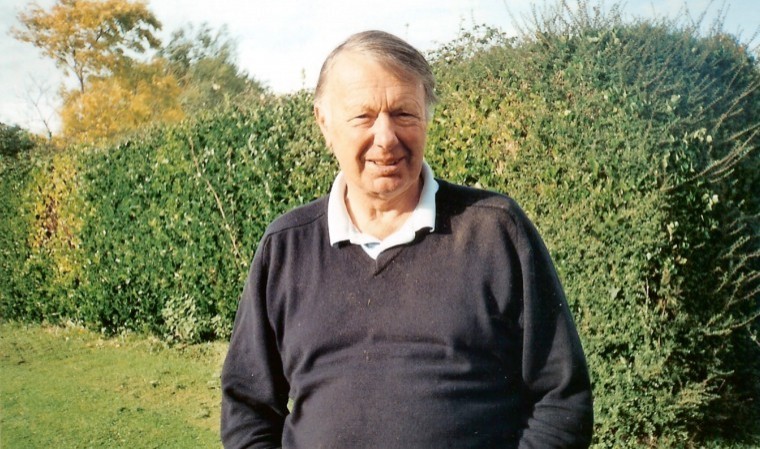If there is one aspect of livestock farming I really miss from years past it’s the regularity of visiting local cattle markets.
As a child I would go with my father on Monday mornings to the old Barnham Market; seeing prime beef cattle being driven by their drovers across the main road from the Barnham Junction, perhaps directly from rail wagons, into the market pens just across the road; and to observe and listen to the chatter as senior farmers gathered around the animals, watched them weighed or graded if they were for killing, and later followed the crowd round with the auctioneer as he began moving down the lines, selling to farmers or local butchers for onward lorry or rail transit to farms or abattoirs.
When Barnham Market closed down, trade moved to Chichester, then on Wednesdays, where the whole thing repeated itself until sadly that market lost its way somewhat, making way for a big car park, which remains today. The number of cattle in the area was by the early seventies declining, and arable farming – with generous Common Market grain subsidies – meant the prospects for a renaissance of beef farming in areas like the Kent and Sussex Weald went into decline. Foot and mouth, BSE, and increasingly out of control TB have since exacerbated this drop in numbers. The markets dwindled.
Now we have Hailsham, Ashford to the east and Salisbury and Frome within reach to the west whereas 50 plus years ago there were regular markets at Pulborough, Steyning, Horsham, Guildford, Heathfield, Haywards Heath all within easy reach. We also had abattoirs in most areas and I remember well taking cattle into Clays plant at Yapton. How much more humane too for the animals, which didn’t have today’s prospect of a trip down to Devon but were loaded and despatched, often within an hour from leaving their home surroundings.
So now we only have Hailsham Market still putting up a strong case for selling liveweight in Sussex. The option farmers had of taking stock home if they didn’t like the price offered is not helped by today’s animal movement restrictions imposed unsuccessfully to stop the spread of TB. Hailsham has an excellent reputation for realising prices which compare well with the top in the country. Their senior auctioneer Roger Waters knows where to find any particular cattle if a client is looking for a private deal, and Hailsham thrives.
For years we sold all our yearling store cattle through him and never had a complaint about prices. Now our calves are sold privately as one/two week olds, really too young for putting through market. Our cull cows go straight to the abattoir, despite the distance from the farm, as we feel it is more humane than going to market to be unloaded, put through the auction ring and then uploaded and sent on a further journey. That’s how I see it anyway.
There has been talk about moving the market out of Hailsham or, God forbid, closing it. But there is a lot of support for it, both from cattle and sheep farmers and, one imagines from the Hailsham shopkeepers, who must welcome business to the town, despite the inevitable extra market day traffic.
So with all the laws and changes, form filling, traffic and so on, going to market is sadly no longer on my radar. No longer to meet other farmers, chew the fat, explore new ideas, have a bite in the excellent market café, learn the gossip …times sadly change, but it is good at least one excellent market in Sussex survives.
Needless to say another aspect from the past that one misses is the chance to get a fair price from the milk buyers who replaced the Milk Marketing Board way back in 1994. Yes, today’s price has improved some 10 pence per litre in the past six to eight months but it is still languishing pretty much where it was back in 1994. While in our situation we are saving money by not having the robots, our actual cost of producing a litre of milk still knocks on towards 30ppl, because every other input cost is rising inexorably. Chemicals, fuel, fertiliser, seed and parts have in most cases returned to their steady increases. The only thing that has relieved this was the cheque from the Rural Payments Agency around Christmas, which due to the currency fluctuations increased by a quite useful amount. As much as I detest subsidies, and being aware this system is not going to continue much longer, I have to bite my tongue.
Recently, with an offer of free, used astroturf from a football club installing a new surface, we have been upgrading cow tracks through the farm. All sounded such a good idea but developing a method to unroll and lay these extremely heavy two metre wide sections was not initially straight forward. We had seen pictures of other farmers unrolling them and it did look tricky but we solved it in the end by simply unrolling the rolls on the required site with the farm digger and managed to complete the work to the cows’ satisfaction. They love the surface.
Our estimation of material needed was way over the reality and we find ourselves with many hundreds of yards of it remaining so it is being moved on. It has proved a really popular surface for the animals and, considering their sharp “claws,” it has settled in and is wearing really well, with the prospect of a further long life after football.
By the time you read this we will be pretty close to knowing who our political masters will be for the next few years. I hope there are no big shocks and will be delighted it’s all over.




